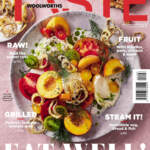Bubbly 101
Drink bubbly like a pro. And who better than Leanne Beattie (a.k.a. @TheWineGirlCapeTown) to fill you in on the basics of good fizz?
Know which pop is tops.
Champagne, Prosecco, Cava, Méthode Cap Classique, sparkling wine. They all contain bubbles, but some are
naturally produced and others aren’t. It’s worth understanding the difference ...
Champagne
There are strict requirements for a sparkling wine to be labelled as Champagne. First, it must be made in the Champagne region in north-eastern France and only Pinot Noir, Pinot Meunier or Chardonnay grapes – a blend of all three, sometimes a single grape variety – that grow in the region may be used. Crucially, its bubbles are the result of the wine undergoing fermentation twice: once in barrels and finally in bottles. When wines in this traditional style are made elsewhere, they must state “méthode Champenoise” or “Champagne method” on their labels.
In the glass: Look for fine bubbles and almond-like flavours, with subtle notes of orange zest and white cherry. The ageing process on yeast particles (called lees) can result in flavours of toast, brioche or biscuit.
Méthode Cap Classique
This is the South African version of Champagne, made according to the traditional method. Simonsig in Stellenbosch produced the first one in the early 1970s and is still a leading producer today. Any grape (including Chenin Blanc) can be used to make Cap Classique, but you’ll find that the traditional Pinot Noir, Pinot Meunier and Chardonnay are most common.
In the glass: As with Champagne, you’ll find fresh, light citrus and brioche flavours in a sophisticated MCC.
Cava
Made according to the Champagne method from grapes in the Catalonia area of Spain, Cava (which means “cave” or “cellar”) is also made through natural fermentation in bottles. It’s commonly made with Macabeo, Parellada and Xarello grapes.
In the glass: Expect zesty lime and lemon flavours, quince and tart apple, as well as a distinctive nuttiness.
Prosecco
Prosecco is made using Glera grapes in the Veneto region of Italy, north of Venice. The wine also gets is sparkle from natural fermentation, but this takes place in wine vats rather than in the bottle.
In the glass: Prosecco has distinctive fruit and floral aromas, along with hazelnut, vanilla and honeycomb. Because it’s aged in large tanks with less pressure, the bubbles are lighter and frothier than those in Champagne.
Sparkling wine
When a bottle is labelled “sparkling wine” it’s quite likely going to be less expensive, and that’s because it didn’t spend months in the bottle producing its own bubbles. Instead, carbon dioxide is injected into the wine to create the fizz.
Choose your ultimate style
Do your like your bubbly bone dry or is a sweeter wine more your thing? Brut is the most popular style these days and it contains up to 12 grams per litre of residual sugar (either from the natural sugars of the grapes, or by means of “dosage”, usually a mixture of sugar and reserve wine added for balance). The latest trend globally
is zero-dosage bubbly, meaning no sugar is added. Locally, Graham Beck has introduced a Zero Dosage MCC in limited quantities. At the other end of the scale, try a demi-sec with 32–50 grams of sugar, or a doux with 50+ grams of sugar – both good matches with rich desserts.
Read the bubbles in your glass
Bubbles are important for taste, as they activate your taste buds and prepare them for the food to come. And who hasn’t been mesmerised by the magic of watching streams of bubbles in a glass of just-poured champers (fun fact: the average flute holds around one million bubbles). Did you know, though, that if you look closely, the effervescence will reveal more about what you’re drinking? Do the bubbles elegantly glide up the glass in fine lines of beads creating a fine mousse at the top? Or are they popping dramatically, tickling your nose before vanishing? Typically the smaller and finer the bubbles, the better the quality of the wine.
Perfect your serve
The ideal serving temperature is 8–10°C. Any colder than that and your taste buds will be slightly numbed. How to make all those precious bubbles last? Tilt the glass when pouring to prevent the wine from losing its initial sparkle. While flutes are widely used – they’re ideal for showing off streams of bubbles to perfection – white wine glasses are increasingly being favoured by the pros. Why? They really let the aromas and flavours shine. Sure, you could go for a sophisticated coupe if you’re feeling nostalgic, but it’s shallow and wide, so you will lose effervescence fast. Preferably pick a glass with a stem so that your hand doesn’t warm up the wine.
Learn to match fizz with food (it’s easy!)
Stock up on a range of bubblies and you’ll easily be sipping them from welcome drinks through mains and all the way to dessert. A fruity, dry Prosecco is a good match with antipasti, shellfish, smoked salmon, sushi and spicy Asian fare, while Cava goes perfectly with a range of tapas, olives, Manchego cheese and Serrano ham. Popping the cork of a Champagne or MCC? Introduce it to creamy cheeses, salamis, calamari, veggie or egg dishes, and fruit-based desserts.


Comments